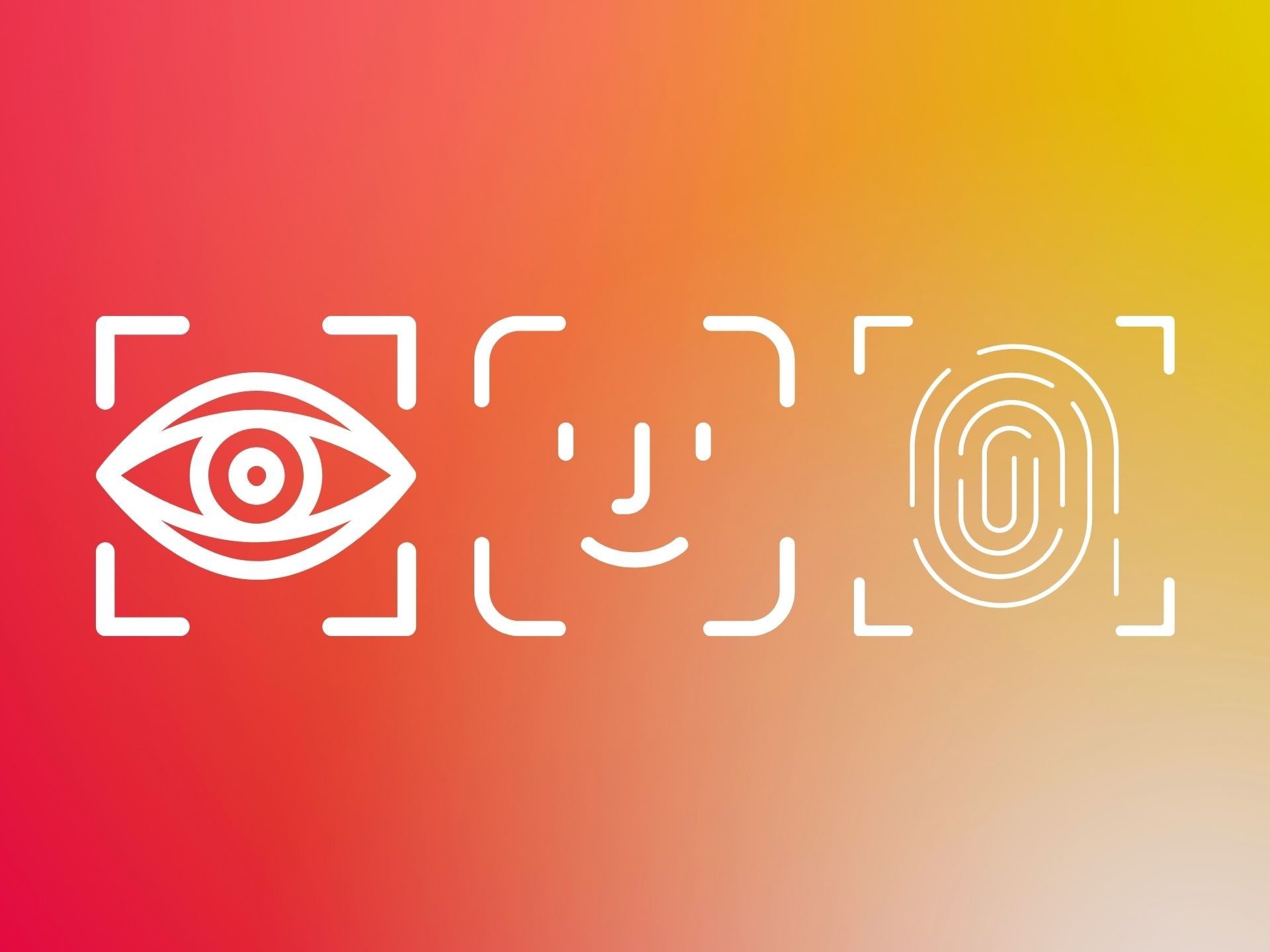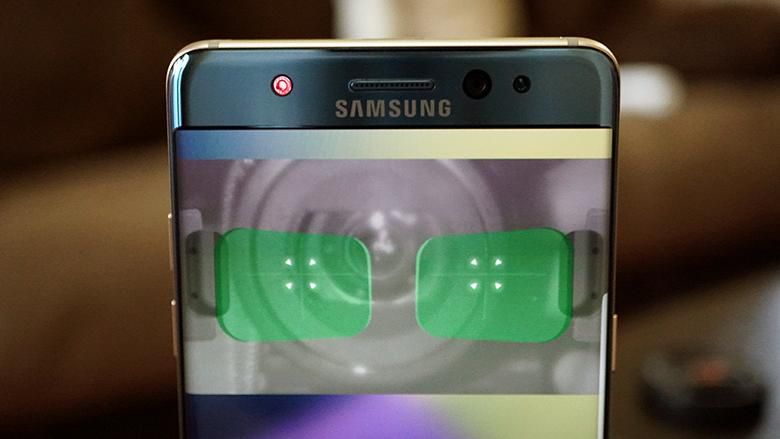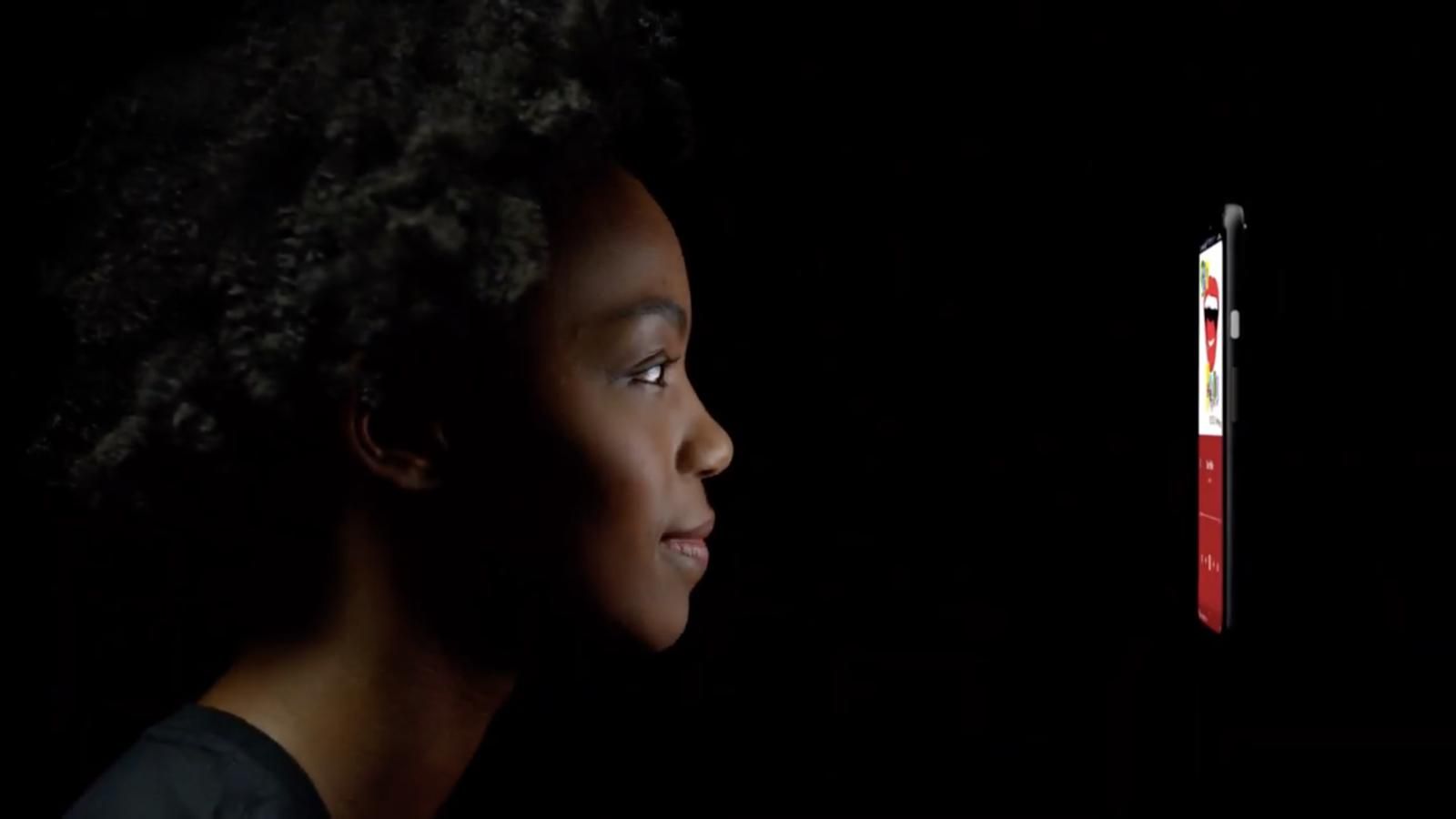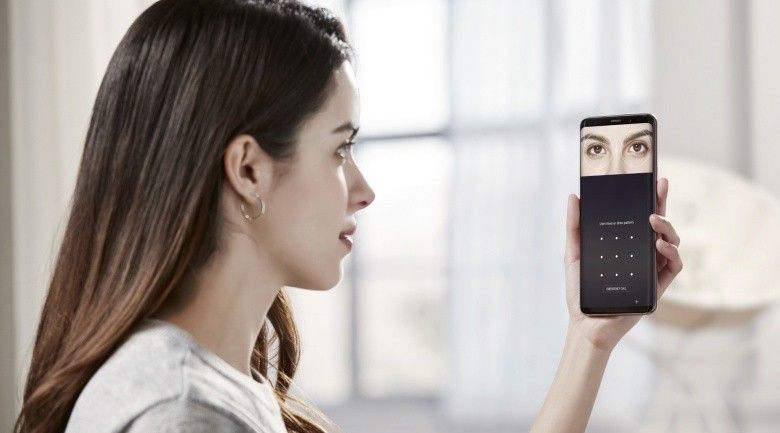Biometric sensors have taken off rapidly in the past few years. They can be found in a lot of general products such as smartphones, tablets, computers, portable storage, and many more accessories. Some places, such as gyms, also allow users to scan their fingerprints and easily access physical locations.
There are three popular biometric methods for unlocking devices and scanning whether the person is who they say they are. The most popular method for authenticating people is the fingerprint sensor, since it’s relatively cheap to integrate and can be adapted to a large variety of products.
What is a retina scanner?
Iris Scanner on the Samsung Galaxy Note 7
The first option on our list is a retina scanner (also known as “eye” or “iris”). This method verifies the person’s retina blood vessels and veins to validate and authorize access. The Samsung Galaxy S series was popular to implement such a feature. It worked great in most cases, but it would sometime misfire and not let the person into their device, requiring users to enter their pin or password.
Now, the scanners used by smartphones are scaled-down versions of real, large scanners, which are far more powerful and harder to trick. The retina scanner was slowly scaled back and phased out in favor of the fingerprint and face recognition technology, which offered a more seamless authentication process that was later fully integrated and supported in Android and iOS.
The retina scanner is often called the most effective and most secure way of protecting sensitive materials, and it’s known to be used by governments and military across the world to prevent unauthorized access. It can also be tricked like most other biometric technologies, but it’s often more complex than other methods.
What is face recognition?
Face recognition isn’t new, but it has only become more widespread and popular in the past few years. The iPhone X wasn’t the first device to come with face recognition, but it was the first smartphone to make it popular and familiarise people with the technology. Face recognition often involves multiple sensors to scan a person’s face to authenticate and provide access to a smartphone, tablet, laptop, and other devices.
Recently, face recognition has been implemented in CCTV cameras, and many large companies use it to track employees and content on the internet. It allows faster scanning, and it provides relatively accurate results.
Microsoft also uses face recognition, also known as Windows Hello, to authenticate and sign people in automatically, once recognized and verified. Smartphones such as recent iPhone devices also heavily rely on Face ID technology to verify people’s faces, make purchases, approve payments, and make other important decisions. Face recognition is hard to trick on smartphones, but there are cases where users were able to trick the system, and face recognition wasn’t a much-loved feature over the past two years, while all of us were required to enter a pin, since it didn’t recognize faces under the mask. Fortunately, that is a thing of the past since iOS 15.4 started supporting Face ID for those wearing masks.
If you’re interested in the Face ID technology and how it evolved over the years, we have an excellent article that goes down on memory lane with important information.
What is a fingerprint sensor?
The fingerprint scanner is one of the most popular and effective ways of verifying a person’s identification, and it’s often used in security industries, smartphones, tablets, computers, and even at police stations and gyms. It scans the patterns of friction ridges of a fingerprint, which is unique to each and every person, and it doesn’t change over a person’s lifetime.
It’s worth noting that a person’s fingerprint can fade over time, and it’s possible to scrape off, which happens to those who do many physical jobs. The fingerprint sensor supports various types of scanners, each providing faster speeds of unlocking smartphones and improving efficiency and security. The four types of fingerprint scanners include:
- Optical scanners
- Capacitive scanners
- Ultrasonic scanners
- Thermal Scanners
All of the fingerprint scanner methods can be fooled and tricked with photos of fingerprints, special prints using 3D printers, and software. It’s important to note that while it provides easy and safe authentication, it’s far from the most secure biometric solution on the market, and it’s usually included alongside other forms of verifying a person’s identity.
Most modern smartphones have a fingerprint sensor either under the display, side, or back. They provide safe and quick access to personal and confidential information such as credit cars, addresses, images, passwords, etc.
Which biometrics authentication method is the best?
There’s no right or wrong answer, and each method has its own advantages and disadvantages. A proper retina scanner is often too large, and it cannot be fitted in smartphones, and it’s also slower than face recognition and fingerprint, even if it’s safer. The face recognition technology is safe and secure, but if an object is covering a small portion of an individual’s face, it will fail most of the time to recognize the person. Even if the software can identify, there are some increased security concerns.
The fingerprint solution is far from the best, but it’s one of the fastest and most used methods of providing access to physical places, smartphones, tablets, computers, and other devices.
The main reason why most manufacturers implement and include at least two biometrics authentication methods is simple; it gives users a choice. When a user’s finger is wet, they’ll have to wipe and clean it to get it recognized by the fingerprint reader. In contrast, face recognition should be smart enough to identify and acknowledge the person, letting them go ahead with a purchase or unlocking the device.
It’s also worth mentioning that smartphones such as OnePlus, and recent Samsung devices do not have specific hardware to identify and recognize faces. They only rely on the front camera to verify the person’s face. This system isn’t safe by any measurable standard, but training AI, it’s getting harder to fool and trick these systems. It also provides an easy way to unlock the device when required, but we don’t recommend using it as the only form of protection.
Choosing the best biometric method depends on the use case, and how secure it must be. A bank or police station may even opt to use all three, alongside other security measures, to ensure confidential information is kept away and private from unauthorized people. Data centers also often use facial recognition in video surveillance equipment to prevent unauthorized people from entering buildings. Once a person is flagged as unverified, it can trigger and sound off an alarm to security agents.




